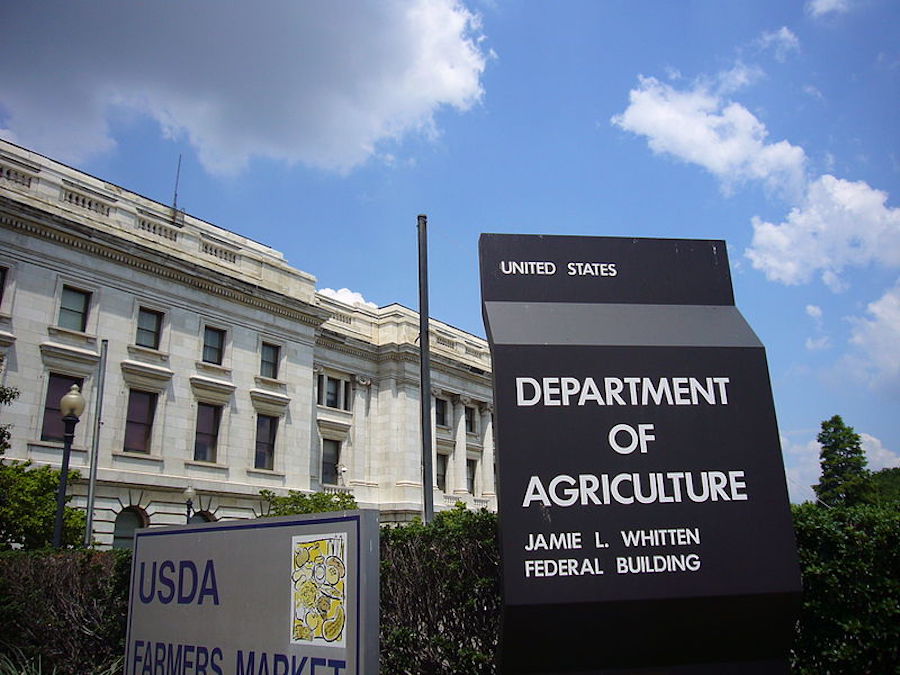New World Screwworm threat looms at southern border, livestock imports suspended
By willowt // 2025-05-13
Tweet
Share
Copy

- U.S. Agriculture Secretary Brooke Rollins has imposed an indefinite ban on live cattle, horse and bison imports via the southern border due to the resurgence of the New World Screwworm, a flesh-eating parasite absent for decades but now threatening livestock and food security.
- The screwworm lays eggs in open wounds, with larvae consuming living tissue, causing pain, infection and death. Humans are also at risk if infested, with symptoms like foul-smelling wounds, bleeding and visible maggots requiring urgent medical care.
- The U.S. previously eliminated screwworms in the 1950s through a costly, decades-long campaign involving sterilization programs, pushing the pest south to Panama’s Darien Gap — a barrier now breached by recent outbreaks in Central America.
- The USDA links the resurgence to illegal livestock movements across the U.S.-Mexico border, raising concerns about additional diseases (e.g., tuberculosis, measles) and pests (e.g., hoof-and-mouth disease, fever ticks) entering the country.
- The screwworm’s return risks devastating the livestock industry, increasing food prices and causing job losses. Federal agencies are ramping up inspections, but experts warn swift, coordinated action is critical to prevent a full-blown outbreak.
Understanding the New World Screwworm
The New World Screwworm is a nastily efficient parasite, with the female fly laying her eggs on open wounds of warm-blooded hosts. The eggs hatch into larvae, which burrow deeper into the wound, feeding on living tissue and causing excruciating pain. The larvae can be found in skin wounds, the nasal passages, eyes and ears of their unfortunate hosts, producing a distinctive foul odor and a slimy, bloody discharge. The infestations can lead to severe tissue damage, secondary infections and even death. The Centers for Disease Control and Prevention (CDC) warns that humans are also at risk, as the larvae can infest open wounds on the body. Symptoms may include persistent, worsening wounds, bleeding, a foul odor emanating from the wound, a sensation of movement in the wound and the visible presence of maggots. The CDC advises anyone suspecting a screwworm infestation to seek immediate medical attention.A history of devastation
The last time the New World Screwworm was a significant threat in the U.S., in the 1950s, it took a concerted, multi-decade effort involving the U.S. Department of Agriculture (USDA), the Pan American Health Organization and counterparts in Central and South American countries to eradicate the pest. The cost of this effort was high, both in terms of human resources and financial investment, but it was ultimately successful. However, the economic losses caused by the pest were staggering, with estimates suggesting that the screwworm cost the U.S. livestock industry upwards of $20 million per year. The eradication campaign of the mid-20th century pushed the screwworm southward, from Texas and Florida, through Mexico and Central America, all the way down to the Darien Gap in Panama. The gap, a densely forested and largely inaccessible region, was believed to be a natural barrier that would prevent the screwworm's further southern migration — until now.A spillover from the south
Over the past few years, there has been a surge in screwworm outbreaks in Panama, with the pest seemingly overcoming the formidable natural barrier presented by the Darien Gap. Outbreaks have also been detected in Belize, Costa Rica and El Salvador, raising concerns that the pest may be on the move again. The USDA has attributed the screwworm's renewed threatening presence to increased cross-border livestock movements. Illegal immigrants have been transporting livestock across the U.S.-Mexico border, thereby unwittingly reintroducing the pest to the United States. This is not the only disease threat new arrivals may be bringing across the border; there are also growing concerns about the reintroduction of diseases such as tuberculosis and measles.A race against time: Eradication efforts and implications
In response to the threat, the USDA and Customs and Border Protection are stepping up surveillance and inspection protocols at southern border ports of entry. Long lines of cargo and passenger traffic are being held up for hours as inspectors meticulously check livestock and vehicles for signs of infestation. Ranchers, breeders and animal transporters are being urged to keep a close eye on their herds and report any signs of parasitic infection to the USDA. However, the mere presence of New World Screwworm larvae in the U.S. suggests that the pest may already be widespread, making eradication a daunting task. The federal agency's order remains in effect until further notice as teams work to determine the extent of the threat and implement biosecurity measures to prevent a full-blown outbreak. Michael Yawn, an experienced journalist who has reported extensively on issues at the Darien Gap, has highlighted other health risks besides tuberculosis and measles that could be spreading northwards. These include hoof and mouth disease and fever ticks, which pose further threats to the U.S. livestock industry.The human impact
The reemergence of the New World Screwworm is not just an issue for livestock owners and ranchers. The pest has the potential to infest any warm-blooded animal, including domestic pets and humans. The sight of maggots wriggling in one's wound is, at the very least, a horrific experience, but the infestations can also cause serious, lasting health problems or even death.The economic impact
The resurgence of the New World Screwworm threatens to impact the U.S. economy in significant ways. The livestock industry, already reeling from the effects of drought, extreme weather and volatile markets, now faces an additional burden from this insidious pest. This could result in increased food prices, job losses and a ripple effect on related industries, such as agriculture equipment manufacturing and animal health products.A call to action
The timely intervention of Secretary Rollins is a crucial first step in protecting America's livestock and food supply. However, the urgency of the situation cannot be overstated. This is not just a local issue or a problem for the agricultural sector; it's an impending crisis that demands the collective effort of federal agencies, ranchers, veterinarians and the public. The clock is ticking, and swift, coordinated action is essential to curb the spread of this devastating pest. A failure to act promptly could result in a costly outbreak that pushes the livestock industry to the brink, jeopardizing food security and livelihoods across the country. The U.S. has faced the New World Screwworm before, and with concerted effort and robust biosecurity measures, it can overcome this threat once again. The coming weeks and months will test the nation's resolve and its ability to rise to the challenge. Sources for this article include: YourNews.com CDC.gov cidrap.umn.eduTweet
Share
Copy
Tagged Under:
livestock national security agriculture food supply border security food safety panic Public Health chaos outbreak dangerous infections parasite supply chain flesh-eating badfood badhealth clean food watch New World screwworm
You Might Also Like
By News Editors // Share
SIDS concerns on the rise; vaccine-death link resurfaces in data analysis
By Willow Tohi // Share
By Lance D Johnson // Share
Recent News
New World Screwworm threat looms at southern border, livestock imports suspended
By willowt // Share
Trump eyes $1 trillion Saudi investments as Gaza war stalls Israel deal
By isabelle // Share
Texas Senate approves pro-life statue honoring unborn children at state capitol
By ljdevon // Share









